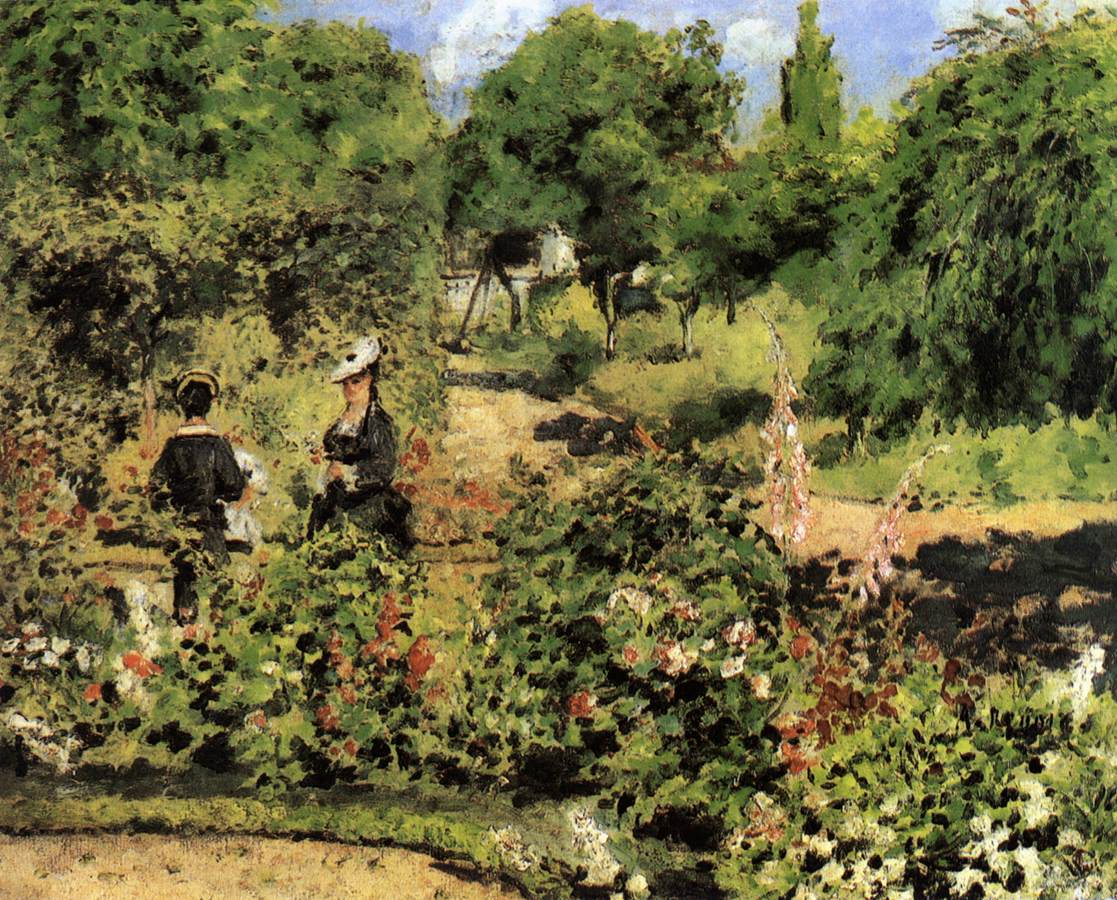Description
The painting Garden in Fontenay, by the French artist Pierre-Auguste Renoir, is a work that stands out for its beauty and delicacy. This work was created in 1874 and measures 51 x 62 cm.
One of the most interesting aspects of this painting is its artistic style, which is part of impressionism. This artistic movement is characterized by the representation of light and color in nature, as well as by capturing the atmosphere and the feeling of the moment.
The composition of the work is another outstanding aspect. Renoir manages to create a harmonious and balanced scene, in which the characters and natural elements are perfectly integrated. In the upper part of the work, a clear blue sky can be seen, which contrasts with the intense green of the foliage and flowers.
Color is another fundamental element in this work. Renoir uses a palette of soft and luminous colors, which provide a feeling of tranquility and serenity. The pastel shades of the women's dresses and hats, as well as the pink and yellow of the flowers, create a cheerful and warm atmosphere.
The history of the painting is also interesting. Garden in Fontenay was created in the garden of the house of the painter Gustave Caillebotte, who was a friend of Renoir and other impressionist artists. The work depicts a group of women and children enjoying a summer's day in the garden, and the sitters are believed to have been Caillebotte's wife and daughters.
Finally, a little-known aspect of this painting is that it was stolen in 1985 and recovered in 1990. The work was found in a house in Italy and returned to the Musée d'Orsay in Paris, where it is currently located.
In summary, Garden in Fontenay is an Impressionist work of great beauty and harmony, which stands out for its composition, color and atmosphere. The story behind the painting and its recovery after being stolen add additional interest to this Renoir masterpiece.

